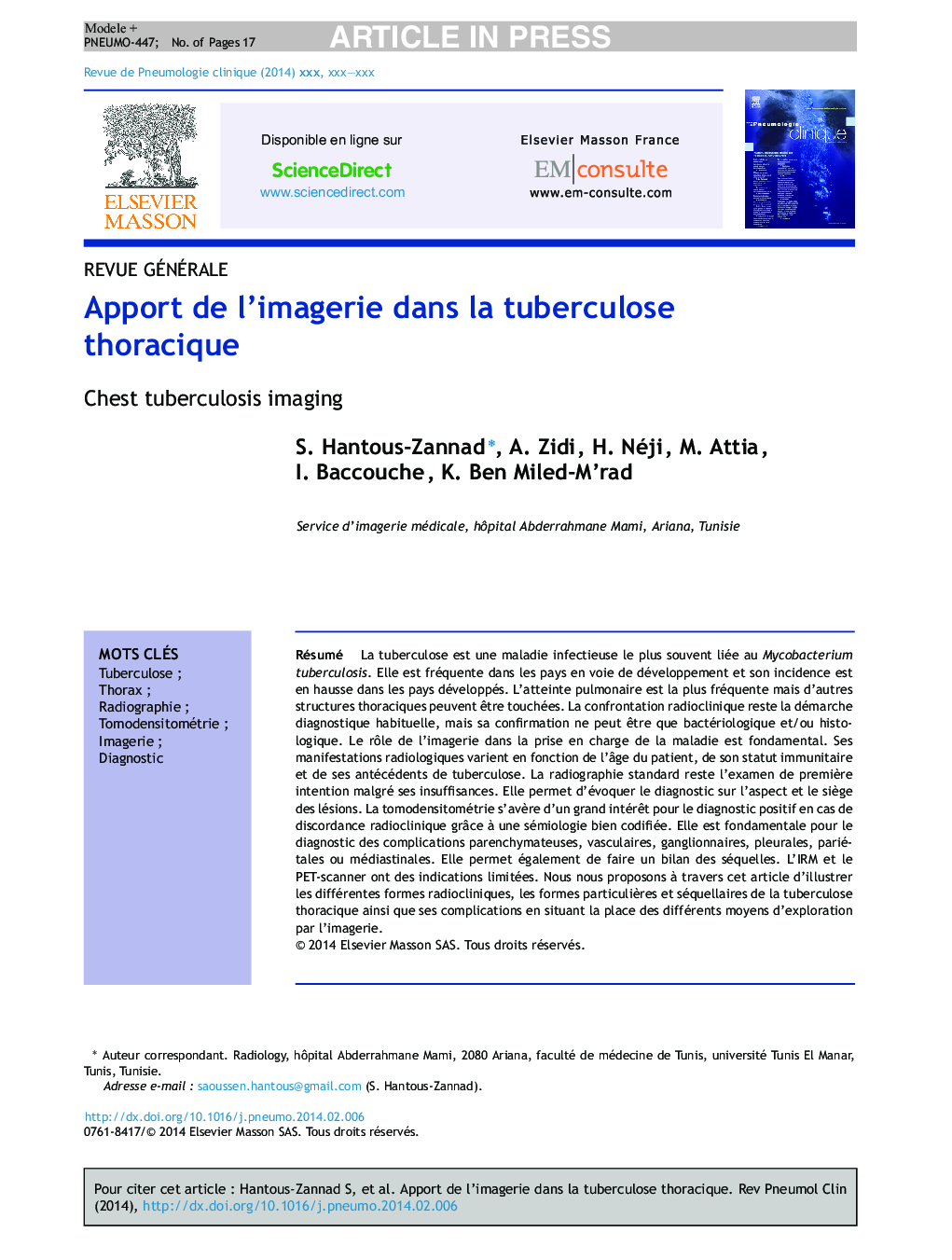| Article ID | Journal | Published Year | Pages | File Type |
|---|---|---|---|---|
| 3419413 | Revue de Pneumologie Clinique | 2015 | 17 Pages |
Abstract
Tuberculosis is an infectious disease mostly due to Mycobacterium tuberculosis. It is frequent in developing countries and its incidence is rising in developed countries. Lungs are the most involved organs of the chest but other structures can be affected. Imaging is fundamental in the management of the disease. Confirmation of diagnosis can be made only by bacteriologic and/or histologic exams. The first approach of diagnosis is based on clinical symptoms and chest X-ray signs. Radiologic signs depend on patient's age, his immune status and his previous contact with M. tuberculosis. Conventional chest X-ray remains the first-line exam to realize. It can suggest the diagnosis on the appearance and location of the lesions. CT scan is recommended for the positive diagnosis in case of discrepancy between clinical and radiographic signs, as for the diagnosis of parenchymal, vascular, lymph nodes, pleural, parietal or mediastinal complications. It is also essential for the evaluation of parenchyma sequelae. MRI and PET-scan have limited indications. The purpose of this article is to illustrate different radiological forms of chest tuberculosis, its sequelae and complications and to highlight the role of each imaging technique in the patient's management.
Keywords
Related Topics
Health Sciences
Medicine and Dentistry
Infectious Diseases
Authors
S. Hantous-Zannad, A. Zidi, H. Néji, M. Attia, I. Baccouche, K. Ben Miled-M'rad,
